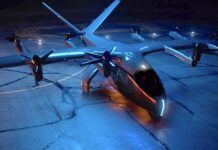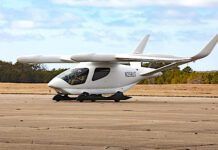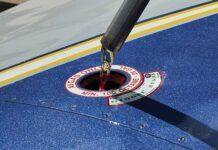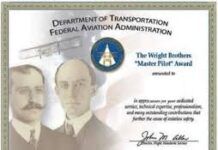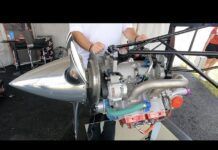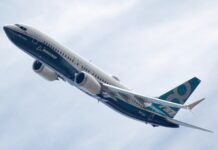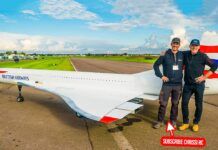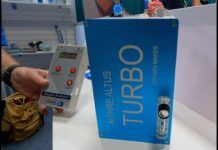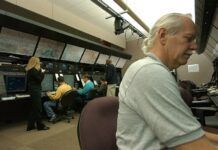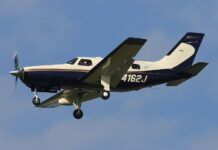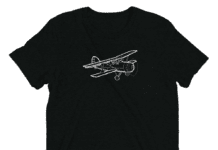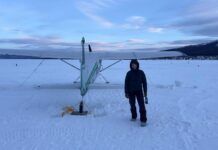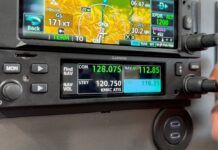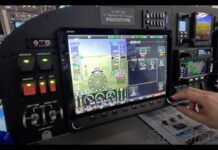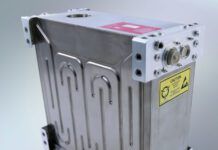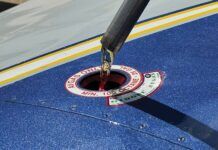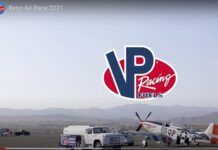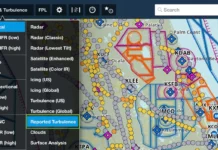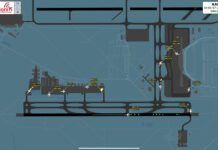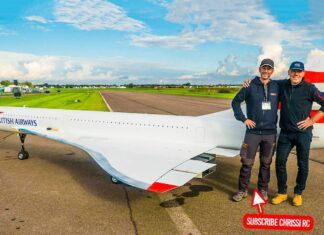
Ask aircraft owners about their experience with an annual inspection and you are likely to get many different opinions and scary tales of what was and wasn’t done. Unfortunately, there are shops and mechanics doing business haphazardly and that have little concern for customer service.
I have been an IA mechanic and shop owner for years, and in my opinion the annual inspection is not a mystery, not a secret, and is a straightforward job that should not be made out to be difficult to conduct. Unfortunately, there is no shortage of mechanics who simply are not familiar with an effective and systematic way to conduct an annual, including keeping track of time and materials. As an owner you also may be paying them to learn on the job about your particular aircraft. Ask ahead of their experience.
I visited a shop that I consider to be operated professionally by experienced general aviation mechanics. While there are many shops across the country and each one does business a little differently, there are important basics that just don’t change.
In talking with aircraft owners about annuals, several statements are heard over and over. First is just how much it costs; second is how long it took to do the job; and third the quality of the work seemed important if it was shoddy, but not so important if the work was done properly—in other words, it’s expected.
Good Shop Signs
A good shop is equipped with all the special tools and test equipment necessary to do an annual inspection properly. The equipment and tools represent a large expenditure to purchase, maintain and keep up-to-date and calibrated.
Does the shop you use have all the tools and equipment to work on and inspect your particular aircraft? Has all of the test equipment been calibrated and are there stickers or some type of data on the test equipment indicating this?
Are the tools stored in specific places or are they scattered around the shop? Huge amounts of wasted time are among the cardinal sins of disorganized shops, and it’s at your expense.
Before your cylinder is rejected for low compression, it may be a good idea to check the status of the compression tester and if the test was being done to current tech data? Continental has a specific method and tester type, for example.
Sure, a Piper Cherokee does not require many special tools but larger, more complex aircraft do such as special jacks and a hydraulic test unit for a Cessna 210. A proper gear retraction test cannot be done without using equipment (or similar generic) specified in the manual.
The space alone to house the tools, equipment, and technical data is costly. Moreover, the latest issue of service information, bulletins, and maintenance manual for a fuel delivery system is now over $1500. A good shop will have on hand many parts that are used on the types of aircraft the shop normally repairs. This saves the owner time and money.
The employees of a good shop are trained much more so than the bare minimum to get an A&P license. As with any certificate or license it is a license to learn. There is nothing wrong with a person that is learning if a senior mechanic that has done the job in the past supervises.
Many general aviation maintenance technicians have many years of experience and have most likely attended several classes in the maintenance of either a specific aircraft or system. A decent personal appearance and some type of professional demeanor is also important so as to instill confidence in the aircraft owner. Appearance counts in all professions.
Most shops have a system to track each job and how many hours are spent on a particular job. This shop uses a computerized system that tracks not only the job and what parts were used on the job, but also who worked on the job and for how long. This is done with a scanner and bar code just like a grocery store. It’s felt to be necessary so that the customer is only charged for the work that was actually done on the aircraft or part. No guess work or ballpark charges.
The Facility
The facility, hangar etc., where it’s located, how it’s organized and what the environmental conditions are in the workplace is important. Work areas that are extremely cold or hot, poor lighting, poor ventilation, or have high levels of smoke, gas, or noise detract from, and reduce worker performance.
Where is your aircraft going to be stored before and after the inspection and where will it be parked if it is awaiting parts? Where are your aircraft parts stored during an inspection—such as seats, carpeting, rear bulkhead, etc.?
Are the components of your aircraft marked or is the place where the parts are stored marked so you know you will get back your parts in a clean and undamaged condition? Is the facility spotless?
Does the shop have proper insurance and what does the shop insurance policy cover? Is your aircraft insured when the mechanic is operating it for a run-up or taxi, or stored on the ramp?
Inspection Guidelines
The preparation and preliminary aspects of the annual inspection are very important and organization is the key to a complete and timely inspection. Ideally, the shop and the owner of the aircraft should share the preparation phase duties.

An owner should have a record or inventory of sorts identifying just what was given to the shop, and copies made of the most important documentation. For example, copies of previous log entries for the past several years to identify major repairs, tach and total time, AD note compliance, modifications and alterations and 337 forms.
Use good judgment before turning over records to just anyone or leaving logs and records in the plane when you drop it off. Neat, concise records are important. Sloppy records, poor organization (a shoebox full of work orders and 337s) invites additional sloppy record keeping by the shop. Keep a copy of every work order generated on your plane for future reference. Shops can throw them after a few years.
Shops can spend hours trying to get data they need to complete an inspection or determine if an AD note was complied with. You pay for this time. If the documentation can’t be found or easily obtained then an engine or component may have to be disassembled.
The aircraft owner is responsible for the records, not the shop, although the shop is required to list in the aircraft records any maintenance, all repairs, all inspections and the results and AD notes that were complied with.
As part of an annual inspection the shop must research and identify all AD notes that apply to your aircraft, engine, propeller, and accessories. While all AD notes may not be complied with, or possibly some may not apply or be due at the time of the annual, the shop should identify and clearly state the status of all the AD notes. Only return the aircraft (and associated prop, engine etc) to service if there are no outstanding AD notes due at the time the inspection was completed.
As an owner you should remove all equipment from your aircraft that is not part of it—portable GPS units and mounts, charts, flashlights, etc. These items tend to get lost, or damaged with unattended aircraft.
Ideally, the aircraft should be cleaned and vacuumed before the delivery to the shop. A dirty aircraft makes a good inspection difficult to conduct. You may pay for the shop time to clean it.
Pre-inspection Phase
The objective is to determine that the aircraft meets the type certificate design (original configuration) and is in a condition for safe operation. The condition for safe operation is governed by a variety of approved data including aircraft maintenance manuals, AC 43.13-1b, AD notes, and service bulletins. Most modern aircraft have specific limits as to wear of parts, cracks, fluid leaks, air leaks, and a long list of limits as to what is “serviceable,” out of the aircraft manual.
The FARs specify what must be done during an annual inspection. A checklist must be used and the items that must be inspected are listed under FAR Part 43, Appendix D. This lists the scope and detail as a minimum to be inspected.

Manufacturers’ inspection checklists are more detailed and may include reference to service bulletins, and lubrication that should be done as part of the suggested servicing during an annual. The legal requirement for an annual inspection (unless required by an AD note) does not include general airframe lubrication or changing engine oil.
As a practical matter, changing the oil or at least draining and re-filling the sump may be required since many aircraft engines have a removable sump suction screen as well as an oil filter or pressure screen that must also be removed to inspect for contamination.
The preparation for inspection as well as the inspection itself is generally divided into separate parts. Repairs are accomplished after the inspection is complete and all AD notes have been researched and a determination made as to what applies and what will be done.
This is where trouble begins between the customer and the shop; the inspection is just that and should be treated as such without including servicing, lubrication, repairs or AD note compliance. The cost of the inspection (labor and materials used during the inspection) should be clearly communicated to the aircraft owner. Repairs, AD note compliance, parts, alterations, fluids and hardware are additional.
After the inspection is completed a list should be written identifying each deficiency found and whether the repair is required or “just a good idea.” The inspection should be complete before discussing repairs and a determination made as to the airworthiness of the aircraft—did it pass inspection or not?
If it did not pass a discrepancy list must be given to the owner and the inspection identified in the aircraft records as un-airworthy. If an owner disagrees with the findings or wants another facility to do the repairs then that is a possible option depending on the required repairs.
A special flight permit can be issued if the aircraft can be safely flown to another airport for repairs or just the repairs to make the aircraft flyable can be done to allow a one-time operation for repairs.
Once required repairs are accomplished the aircraft does not need to be re-inspected. The annual inspection date remains in effect requiring another inspection 12 calendar months from the previous inspection.
Pre-inspection Details
Normally, the first step by the shop is to do a walk-around similar to a pre-flight looking for previous damage and to make note of the general condition. Specifics such as oleo strut inflation, tire inflation, flap, rudder and aileron position and condition in relation to the cockpit indication are all checked.
Also noted are any obvious fuel, oil or hydraulic leaks or puddles on the ramp. Finally, the engine compartment is checked for oil level, missing parts, baffles, damage to the cowling, missing fasteners, etc. The aircraft is operated with a taxi check of the various instruments including gyros, instruments, compass, autopilot, radios, and brakes. A written record of all checks is made.
Once at the run-up area a record is made of all instrument readings before, during and after run-up to include a static power check (using an accurate RPM instrument), which is mandatory as part of the annual. As much information as possible should be recorded and kept with the aircraft inspection information for future comparisons.
Back at the hangar the actual inspection phase starts. Removing inspection panels can be done by anyone, including the owner of the aircraft, but it is typically included in the inspection phase.
The inspection should start with an oil drain catching some oil for oil analysis, removing the pressure screen (or oil filter and cutting it open) to check for contamination, and removing the suction screen (if removable) to check for the same. While the engine is warm the spark plugs (lower or upper) are removed and a compression check completed with the results written on paper, not on the cylinder.
This sequence is important as it makes no sense to do an in-depth inspection of the engine if there are one or more cylinders that have low compression or significant amounts of metal are discovered in the engine oil, filter media or sump screen. If the engine compression is OK and there is negligible metal in the oil then the inspection continues after the aircraft is positioned in the shop.
This is when the inspection panels, seats, carpeting, battery, etc are removed. During every part of the preliminary or preparation phase written notes are kept on problems discovered such as stripped screws, broken wires, etc that need repair. Mechanics should not only record the stripped screws but also hang a bright colored streamer from each area that requires attention prior to assembly.
Mechanics then remove the wheels and service the wheel bearings. Mufflers are typically removed and checked for leakage with a test unit, and any discrepancies are again written down.
The shop inspector (IA) is called when the aircraft is ready for inspection. The inspector has reviewed the AD notes and referred to the log books to determine what AD notes need compliance and has that information on hand as well as any notes that mechanics recorded.
The inspector will record all of his findings as well and when the inspection is completed the inspector will inform the mechanics what, if any, part of the aircraft can be assembled. The areas that need to be repaired will be left open or accessible. A complete list will be compiled with a written estimate for necessary repairs and repairs that can be deferred.
The owner will be contacted and a review will be made with the owner prior to any repairs being made. While owners sometimes complain how an inspection is conducted and what items are “discovered” during an annual it is well known that shops that do not have facilities to do major repairs tend to overlook areas that are in need of repair.
This is not to say that a cracked wing spar would be ignored, but areas that may need further disassembly may not get the attention the area needs because the shop does not have the proper tools or facility to do the inspection properly. For example, some flight controls are not allowed to have any cracks in the skin to be considered airworthy. In order to return the aircraft to service the flight control must be removed, re-skinned, the flight control balanced, and re-installed.
If, during the removal, damage to the wing is now exposed, or suspected, more skin should be removed to get a better look at the wing interior. On aging aircraft when a wing is opened up or flight control re-skinned, further problems are often found e.g. corrosion or cracks.
While it’s not the inspector’s fault that further damage was found, if an inspector is not looking for damage and does not open up suspect areas to get a better look, damage won’t be found. The plane will be released for flight when it should not be.
As an owner you can look at this two ways. Is it cost you are concerned with or is it most important to have a safe aircraft to fly? Some say: it flew in it should fly out. That may be true, to a point, but then what is the purpose of the annual inspection if the intention is to not find problems needing repair?
I would want to know that the aircraft I am flying is safe, and that no parts including a wing are likely to separate from the aircraft in turbulence. When an annual is signed off it is for the entire aircraft that is found airworthy and safe.

There is no “good enough.” It meets the requirements for an airworthy aircraft and is safe to operate or it does not get the approval for return to service.
Repairs
Repairs are another phase after the inspection is completed. Repairs are becoming more and more difficult as parts prices are either out of sight or the part is just not available. A good shop is always searching for ways in which repairs can be made and checks all options to get the aircraft repaired by the most economical method.
An engine control cable for a Musketeer (parts no longer provided by Beech) needed replacing and the new cable was $5000—not five hundred dollars. The shop used a work-around that saved significant money. A designated engineering representative (DER) was called in to investigate the option of using a similar part made by the manufacturer of the original cable.
This was allowed by the DER; the part was manufactured and installed for $1200. An owner-made part was not an option in this case. It sounds crazy but the rules must be followed and the plane is now back in the air—legally.
A door on a Cessna Cardinal was bent, which can happen when a gust of wind pushes that huge door beyond full travel. The frame door jamb was also damaged. Here is where aviation and automotive repair diverge dramatically.
This is a difficult repair and must be done with precision for the aircraft to fly correctly and the door to close properly. The doors on most general aviation aircraft are not interchangeable from one aircraft to another as each door is fitted and trimmed to the particular aircraft.
The skins, frame and the windows are not identical, unlike an automobile door that can be ordered, installed and painted in hours. The door skin for the Cardinal was ordered without holes and larger than the finished door so the holes in the skin could be drilled to match up with the door frame and then trimmed to fit.
The skin must be properly oriented and the rivet holes drilled right the first time so that the opening for the window is in the correct location, the door handle fits and is lined up with the door latch mechanism and the door closes properly.
To accomplish repairs such as this you must have the correct equipment, experience and skill to do the job right the first time. Solutions to repair problems can be found but it takes the skill and experience of a good shop to come up with the most economical and airworthy method.
Owner Assistance
Owner assistance in the annual process is encouraged by some shops, including this shop, but this is not that common. The definition and value of owner assistance means different things to different people.
Mechanics often snicker at an owner trying to work on their own plane because a lot of mistakes are made due to lack of any practical experience or proper tools. Actually, no one may “assist” in the actual inspection of the aircraft.
It’s the preparation and closing up of the aircraft after the inspection that is usually done by an owner if an owner is allowed into the shop area. Unless an owner is very familiar with what inspection panels need to be removed and what needs to be disassembled, it won’t save money, and if there are lots of questions to the mechanic if may cost more for time.
The general consensus is that owners should be involved in the annual inspection process to learn the mechanical details and sequence of events as part of the process. A “simple” replacement of a nav light was attempted by an owner and in the process of removing it the tail cone was dropped and cracked, and the nav light lens was broken.
If a mechanic had stopped what he was doing to work on the nav light with the owner it would have taken much less time and the damage would not have occurred. I am not in agreement with the mechanic in not assisting the owner, however, time is money and shops have to charge for their time no matter if it is “training” or actual work.

Owners must be careful when working on their aircraft as damage can inadvertently occur if you do not know what to expect or if you make an error. Approach every job with respect no matter how easy the job may seem.
Installing screws in an inspection panel can seem easy but there are pitfalls such as installing screws that are a little too long, that is there are a series of virtual identical screws only differing in length, but which can make a day and night difference an owner may not initially appreciate until he puts a long screw where a short screw belongs.
Some areas with “long” screws can interfere with flight controls, fuel lines or electrical wires and possibly the error won’t be discovered until a fuel leak develops or a flight control binds. I am not trying to discourage an owner from working on their own plane or assisting before or after an annual, just pointing out that aircraft are delicate machines.
Anyone that works on an aircraft must be continually aware that the job must be done correctly and according to the maintenance manual. You must keep track of where every screw comes out of so it is returned to the proper hole.
If you don’t know how to do a job or are having trouble, ask, make a phone call, get some help but don’t bluff your way through the job. All of us in the business for a long time have made mistakes and have had to ask lots of questions, and had to have help a time or two and that is OK.
What is not OK is to not know what you are doing and not take the time to find out how to do the job correctly. It is just not worth chancing an accident or the added repair expense to correct a mistake or cause an accident.
Final Phase
After the inspection and repairs are completed it’s time to pay the bill and be on your way. After any maintenance, repair, or inspection always allow time to do an extremely thorough pre-flight inspection.
You may be very familiar with the work that was done and paid the bill, but is that work properly recorded in the aircraft logs? Physically check all circuit breakers, switches, fuel valves are ON, landing gear switches/handles down, alternator or generator switches ON-check everything.
Visually check that the flight controls actually are operating in the right direction. Check that fuel is in the tank, not just that the gauge indicates full. This is your responsibility as a pilot to determine that the aircraft is safe and ready to fly.
Pick a VFR day for the first flight after an annual just to be on the safe side in case something is wrong like an airspeed indicator or alternator not working. While you can’t check everything, check everything you can to make certain that your plane is ready to fly. And get a copy of every work order, as it may someday keep you from having to do a tear-down.
This article originally appeared in the January 2014 issue of Light Plane Maintenance magazine.
Read More from Light Plane Maintenance, and learn how you can receive your FREE copy of 40 Top Maintenance Tips!




